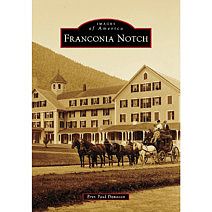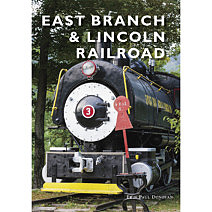Abandoned Railroad Beds, White Mountains – It is hard to imagine that from the late 1800s to the early 1900s railroading was a way of life in the New Hampshire White Mountains, and timber barons dominated. You would think that after all these years no evidence of this era would exist, but it does. If you are a conservation or environmental photographer, some part of the White Mountains railroading era will interest you.
The historic railroads in the White Mountains are a common topic among hikers and history buffs. And as an environmental photographer I have been able to find interesting subject matter along all the railroads I have explored. One area of the railroads I have focused on is the actual railroad beds.
The best preserved abandoned railroad beds I have seen in the New Hampshire White Mountains are deep in the Pemigewasset Wilderness in East Branch & Lincoln (1893-1948) territory. The Lincoln Brook Branch of the EB&L that travels around the southern end of Owls Head Mountain (above) is unbelievable! As you look at the above image keep in mind this in not a trail, nor is it maintained.
This branch of the railroad began near Camp 10, along the Franconia Brook Branch, crossed Franconia Brook, and then traveled around the southern end of Owls Head Mountain passing Camp 11 and ending at Camp 12 in the Lincoln Brook Valley. It is my understanding this area was last logged in the early 1900s.
Many of the spur lines that ran for only short distances off the main railroad grade, like the above one in the Thoreau Falls Valley of the Pemigewasset Wilderness, are still visible today. We can still easily identify the railroad grade, but nature is slowly reclaiming what belongs to her. And at some point in time the above image could be the only proof this spur line ever existed.
You do not have to go far off the beaten path to find abandoned railroad beds. Remnants of the old Profile & Franconia Notch Railroad (1879-1921) can still be seen along Route 3 in Franconia. This railroad only serviced the Profile House in Franconia Notch. The railroad bed (above) is well defined during the winter months.
I also will point out that many of the abandoned railroad beds are now part of the White Mountains trail system. A great example is the Appalachian Trail in Zealand Notch (above), which utilizes the railroad bed of the long forgotten Zealand Valley Railroad. Another example is the Pemigewasset Wilderness trail system. Without the East Branch & Lincoln, I think there wouldn’t be many trails in the Pemigewasset Wilderness.
If you are a photographer, who is trying to profit from photography, I hope the included images help you realize that building a solid image archive of a particular region involves photographing new locations, not shooting the same locations over and over. And don’t be afraid to venture away from the everyday subject matter.
All of the above images can be licensed for publications by clicking on the image you are interested in. And you can view more images of the historic railroads here.
Happy image making..
Don’t Remove Artifacts | Historic Information Disclaimer | Purchase Our EB&L Railroad Book
Owner of ScenicNH Photography LLC
Erin Paul is a professional photographer, writer, and author who specializes in environmental conservation and historic preservation photography mainly in the New Hampshire White Mountains. His work is published worldwide, and publication credits include: Appalachian Mountain Club, Appalachian Trail Conservancy, Backpacker Magazine, and The Wilderness Society.








ScenicNH Photography LLC
Specializing in environmental conservation and historic preservation photography mainly in the White Mountains region of New Hampshire, Erin Paul’s photography and writing focuses on the history of the White Mountains, and telling the story of abandoned places and forgotten historical sites.